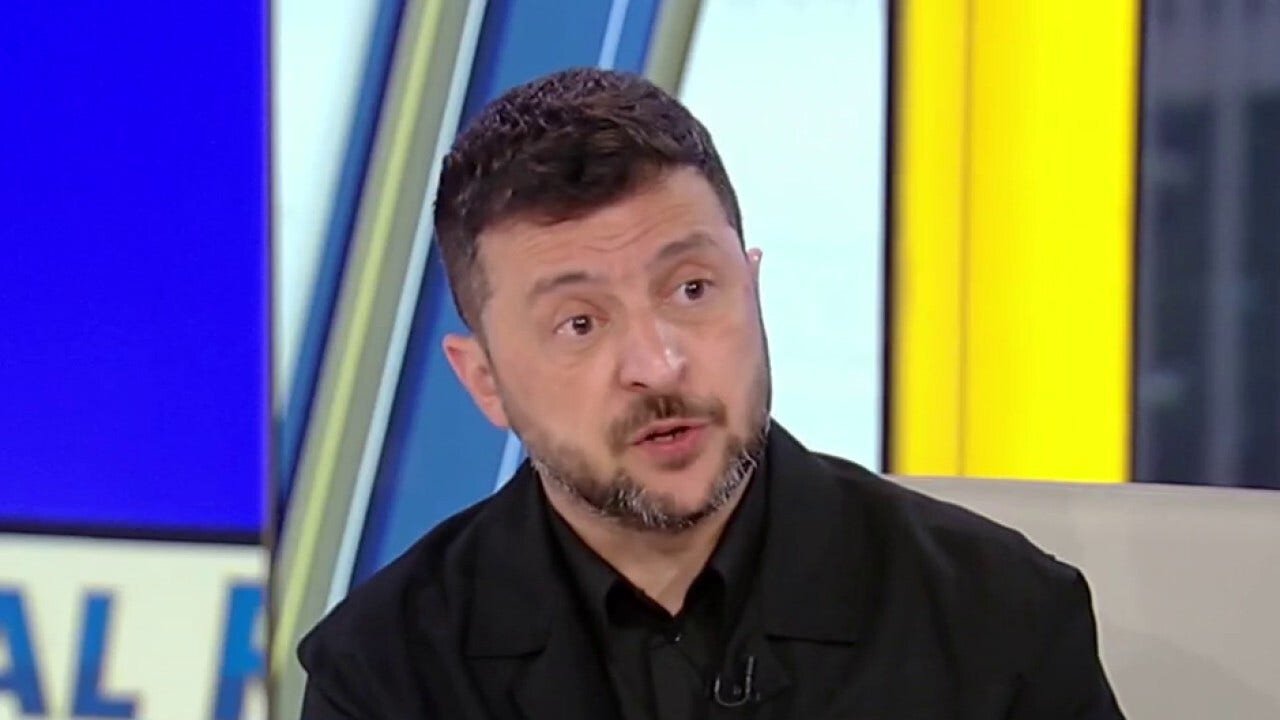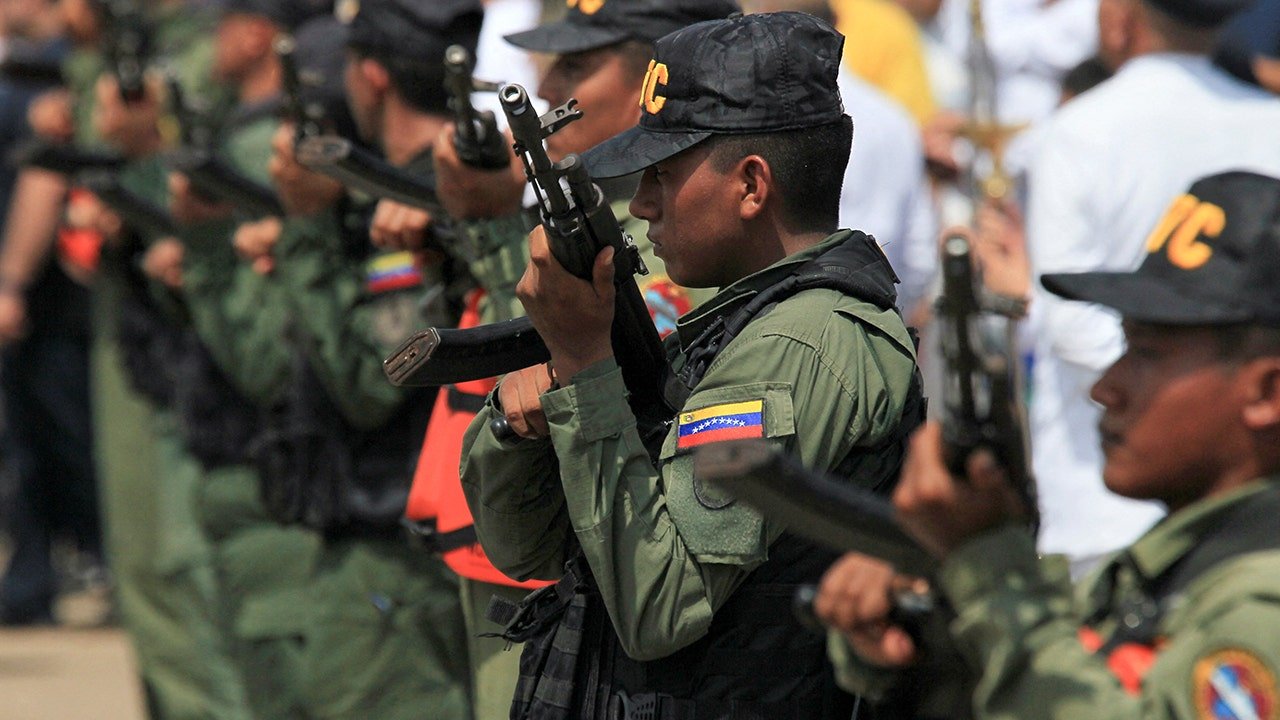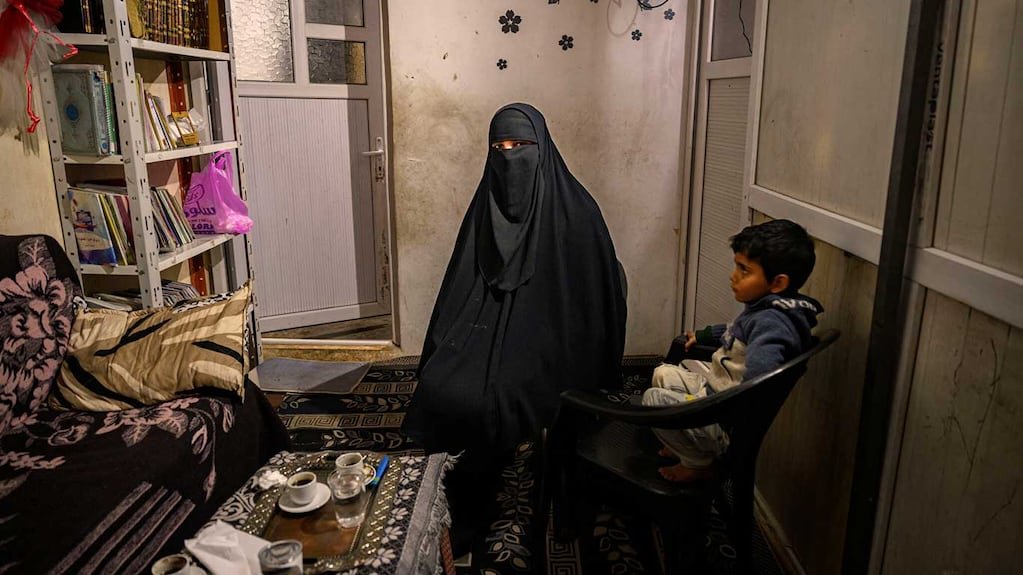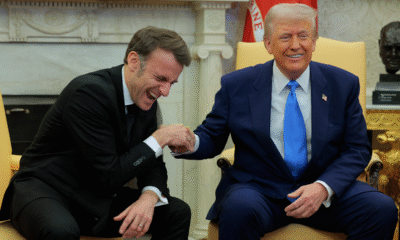INTERNACIONAL
Unfinished Business: The budget cuts Musk couldn’t complete and what’s next for DOGE

Though Elon Musk leaves behind a legacy of massive cuts to government programs which left many members of the Washington, D.C., establishment enraged, he was not able to accomplish all the lofty goals he set at the beginning of his time as head of the Department of Government Efficiency.
According to a May 26 update on DOGE’s website, the initiative has saved an estimated $175 billion through asset sales, contract cancellations, fraud payment crackdowns and other spending cuts. That translates to about $1,087 in savings per taxpayer.
Though significant, the $175 billion is a far cry from the original $2 trillion–nearly a third of the federal government’s total spending–that Musk originally set out to cut.
So, what went wrong?
Richard Stern, an economics policy expert at the Heritage Foundation, told Fox News Digital that DOGE «overestimated what legal flexibility they would have, and the agencies would have, to actually make good on that.»
PRESIDENT TRUMP TEASES ‘LAST DAY, BUT NOT REALLY’ FOR ELON MUSK AT DOGE: OVAL OFFICE PRESSER SET FOR FRIDAY
Though Elon Musk leaves behind a legacy of massive cuts to government programs which left many members of the Washington, D.C., enraged, he was not able to accomplish all the lofty goals he set out to at the beginning of his time as head of the Department of Government Efficiency. (AP/Evan Vucci and AP Photo/Etienne Laurent, File)
From the start, DOGE was hit with not only a tsunami of negative press and outraged Democratic lawmakers, but also a series of lawsuits, which bogged it down in protracted legal battles.
This, coupled with the reality of most of the major end cuts requiring congressional approval to carry out, relegated DOGE’s impact on cutting around the edges of the big programs and agencies it likely would have liked to eliminate entirely.
Despite Musk’s efforts, in many cases agencies such as the Consumer Financial Protection Bureau could only be shrunk and limited, while total elimination requires an act of Congress.
Just last week, U.S. District Court Judge Beryl Howell blocked the Trump administration’s dismantling of the U.S. Institute of Peace, writing in a ruling that the removal of its board members and the takeover of its headquarters by members of DOGE are actions that are «null and void.»
Stern asserted that «at the end of the day, they were just a little overzealous about how much legal authority they would ultimately have to be able to make this many cuts themselves,»
ELON MUSK ‘DISAPPOINTED’ BY TRUMP’S SPENDING BILL, SAYS IT UNDERMINES WHAT DOGE IS DOING

A federal judge has blocked DOGE efforts to dismantle the US Institute of Peace (USIP), whose building is shown in this March 2025 file photo. (Getty Images)
Where Stern believes DOGE can have the greatest impact is on focusing on the information-gathering and whistleblower aspects of its mission.
«You can kind of break down DOGE into two very large buckets,» he posited. «The first large bucket, which is the one that’s mostly been not done, is actually making grand spending cuts themselves directly. I think the second one was identifying what cuts could be made.»
«The original plan was that DOGE could come in and do both these things that they could find specific spending to cut … and then the other part of that was identifying this information and making it public that people didn’t have that would allow for really thought-out spending cuts to come in from Congress,» he explained.
Though less flashy, Stern believes this is where DOGE, going forward, can have its greatest impact.
WHITE HOUSE SENDING $9.4B DOGE CUTS PACKAGE TO CONGRESS NEXT WEEK

Elon Musk, chief executive officer of Tesla Inc., arrives for the Conservative Political Action Conference (CPAC) in National Harbor, Maryland, on Thursday, Feb. 20, 2025. The Conservative Political Action Conference, launched in 1974, brings together conservative organizations, elected leaders, and activists. Photographer: Jason C. Andrew/Bloomberg via Getty Images (Getty)
«There’s a lot of think tanks, including Heritage, that have put together lists for a very long time as to policies that we don’t think are good, where you could cut spending. But I think what no one has a window into is the really deep mechanics of how a lot of these programs work. And so, because of that, it’s actually been very hard in a really robust fashion to even know what programs you could cut spending from or how you would do it or what the ramifications would be,» he explained.
CLICK HERE TO GET THE FOX NEWS APP
«So, DOGE, by being in the administration, has been in and continues to be in a position to actually make that public, to actually put a spotlight on that in a way that really almost nobody else was in a position to do,» Stern went on. «That can feed rescission bills and congressional cuts down the road. But some admin needed to actually do that. And DOGE is finally doing that.»
Fox News Digital’s Greg Norman contributed to this report.
Elon Musk,DOGE,Donald Trump,White House,Politics
INTERNACIONAL
Reporter’s Notebook : A ‘Letter’ To Zelesnkyy Re The Peace Plan

NEWYou can now listen to Fox News articles!
Having covered Ukraine … and Russia … for over three decades, especially the war between the two countries for the last several years, I’ve naturally been fascinated by the latest Trump administration effort to broker peace.
The reaction I’ve been getting from contacts in Ukraine to the 28-point plan to end the war is not all that positive.
«It’s not worth the paper it’s written on,» said one observer.
«Any deal would have to include Ukraine…and Europe,» noted another.
The overall consensus of analysts is that the document is slanted heavily towards Moscow. The man at the center of things, Ukrainian President Volodymyr Zelenskyy, has been diplomatic in various statements, basically saying he’s «reviewing the points» aiming at arriving at a «dignified peace.»
Ukrainian President Volodymyr Zelenskyy meets with Fox News correspondent Greg Palkot in Kyiv, Ukraine, in April 2024, during coverage of the ongoing war with Russia. (Fox News)
US AND RUSSIA DRAFT PEACE PLAN FOR UKRAINE REQUIRING MAJOR CONCESSIONS FROM KYIV
There are all sorts of talks happening now between the U.S. and Ukraine and among European leaders. We’re even hearing from Russian President Vladmimir Putin. It’s no wonder: The stakes in this war for Europe and the world are enormous. If I were to send a quick note to Zelenskyy, it would go something like this:
Dear Volodymyr,
So far so good. You haven’t freaked out, and you’re promising to engage. Rejection of this plan out of hand would have been a non-starter.
TRUMP, ZELENSKYY AGREE ON CRUCIAL ASPECT TO END UKRAINE WAR: ‘GOOD COMPROMISE’
You’re staying cool (though a bit grim and determined), and you’re talking to people.
My overall advice is … pick your fights, don’t sweat the small stuff, and keep the big picture in mind.
I know what your country is going through. Every time I’m in Kyiv, I go to the same military cemetery outside the city, and it keeps getting bigger and bigger and sadder.
TRUMP’S FIRE FADES ON RUSSIA AS HE PULLS TROOPS, AVOIDS PRESSING XI ON OIL
So, as to the points of the plan: There are a lot easy «gimmes» to Russia. Re-joining the G-8. Gradual dropping of sanctions. Granting of amnesty for everything Russian troops have done. I know this stuff is going to stick in your craw, but little of it affects your country’s future.

Memorial flags and photos commemorate fallen Ukrainian soldiers amid the ongoing war with Russia. (Fox News)
I mentioned that you shouldn’t «sweat the small stuff.» Some of the points might sound like a big deal. Like prohibiting «Nazi ideology» in Ukraine. And adopting «EU rules on religious tolerance and linguistic minorities.» That’s pretty much window-dressing for Moscow. Having the Russian language and Russian church regain official status is not horrendous.
In fact, the plan’s glass is at least one-third full for you guys. Confirming your sovereignty. Russia expected not to invade you again. You will receive reliable security guarantees. Rebuilding pledges and humanitarian promises. They are all good. Just nail down the specifics. Get all sides to commit for sure.
COULD TRUMP’S GAZA CEASEFIRE PLAN OFFER A BLUEPRINT FOR PEACE IN UKRAINE?
Now to three of the points which cross, according to analysts, your red line.
Like handing over the rest of the eastern Donetsk region to Russia even though Moscow’s troops haven’t even taken it. The region is referred to as a demilitarized zone in the plan. A «DMZ» ala the divider between North and South Korea. Well, hold them to that. No troops from either side. Tough security on both sides. A neutral body running things. And see if you can get them to not call it Russian!
Then there’s the reduction by a third of your military. Troop strength limited to 600,000. That’s a huge cut, but it’s still not a bad-sized force. That is if…it was properly trained, well-armed, and finely-positioned. Guarantees are needed for all of this to happen.

Fox News senior foreign affairs correspondent Greg Palkot reports live from Kyiv, Ukraine, as the U.S. House approves a long-stalled aid package for Ukraine. (Fox News)
ZELENSKYY WARNS UKRAINE FACES ‘DIFFICULT CHOICE’ AS US PEACE PLAN HITS MAJOR HURDLE
And then there’s the other red line : No NATO troops in Ukraine. That would seem to scupper the plan to have foreign peace-keepers on the ground, which has been in the works, to monitor the peace. A possible compromise? They’re stationed around Ukraine’s borders, surveillance keeps a close eye on things and rapid-response forces are at the ready.
There are also a few gimmes for the U.S. in all this, like sharing in the profits of reconstruction. But that’s the price of doing business with President Trump.
As for that Thanksgiving deadline to sign the deal? The president has already signaled he’s willing to let that slide if there’s talking.
And that other deadline? One-hundred days until a new election? I know it’s a tough time for you politically with those corruption charges getting near. It might be something you have to live with.
Anyway, for what it’s worth, that’s my take.
Negotiations will probably sink on any hard discussion of any of these main points. But you know what the old adage is : «jaw-jaw» is better than «war-war.»
For the proud people of Ukraine, who have suffered so much during this time, it’s worth your best shot.
CLICK HERE TO DOWNLOAD THE FOX NEWS APP
Sincerely,
Greg
volodymyr zelenskyy,ukraine,peacekeeping,foreign affairs
INTERNACIONAL
FAA warns airlines about flying over Venezuela: ‘Potentially hazardous situation’

Trump renews pressure against Venezuela’s Maduro
Fox News’ Lucas Tomlinson and Rep. María Salazar, R-Fla., join ‘Fox & Friends’ to discuss President Donald Trump’s increased military pressure on Venezuelan leader Nicolás Maduro and an upcoming Capitol Hill vote to condemn socialism.
NEWYou can now listen to Fox News articles!
The Federal Aviation Administration warned airlines about flying over Venezuela as it issued a notice urging them to «exercise caution» due to the «potentially hazardous situation» in the region.
The advisory comes as the U.S. has significantly increased its military presence across the Caribbean under U.S. Southern Command, deploying bombers, warships and Marines as part of an expanded campaign targeting drug-trafficking and so-called «narco-terrorist» networks operating near Venezuela.
«Operators are advised to exercise caution when operating in the Maiquetia flight information region at all altitudes due to the worsening security situation and heightened military activity in or around Venezuela,» the FAA advisory said.
«Threats could pose a potential risk to aircraft at all altitudes, including during overflight, the arrival and departure phases of flight, and/or airports and aircraft on the ground,» it added, requesting airlines to provide at least 72-hour advance notice to the FAA if they plan to fly through the area.
US NAVY DESTROYER ARRIVES IN TRINIDAD AND TOBAGO AS TRUMP TURNS SCREWS ON VENEZUELA
Members of Venezuela’s Bolivarian National Guard stand in formation as they carry out an increased security patrol along Lake Maracaibo amid rising tensions between Venezuela and the U.S., in Maracaibo, Venezuela, on Oct. 26, 2025. (Isaac Urrutia/Reuters)
Direct flights from U.S. passenger and cargo carriers to Venezuela have been suspended since 2019, but some airlines still fly over the country on their South American routes, according to Reuters.
It added that American Airlines said Friday it stopped flying over Venezuela in October, while Delta Air Lines said it stopped «a while ago.»
HEGSETH ANNOUNCES OPERATION TO REMOVE ‘NARCO-TERRORISTS FROM OUR HEMISPHERE’

A coast guard boat of the Venezuelan Navy operates off the Caribbean coast on Sept. 11, 2025. (Juan Carlos Hernandez/Reuters)
«Since September 2025, there has been an increase in Global Navigation Satellite System (GNSS) interference in the Maiquetia Flight Information Region (SVZM FIR), as well as activity associated with increasing Venezuela military readiness,» the FAA also said.
«Some civil aircraft recently reported GNSS interference while transiting the SVZM FIR, which, in some cases, caused lingering effects throughout the flight. GNSS jammers and spoofers can affect aircraft out to 250 nautical miles and can impact a wide variety of critical communication, navigation, surveillance, and safety equipment on aircraft,» the FAA continued.

The USS Gravely, a U.S. Navy warship, departs Port of Spain on Oct. 30, 2025. The warship arrived in Trinidad and Tobago on Oct. 26, 2025, for joint exercises near the coast of Venezuela, as Washington ratcheted up pressure on drug traffickers and Venezuelan leader Nicolás Maduro. (Martin Bernetti/AFP via Getty Images)
CLICK HERE TO DOWNLOAD THE FOX NEWS APP
«Additionally, since early September, Venezuela has conducted multiple military exercises and directed the mass mobilization of thousands of military and reserve forces. While Venezuela has at no point expressed an intent to target civil aviation, the Venezuelan military possesses advanced fighter aircraft and multiple weapons systems capable of reaching or exceeding civil aircraft operating altitudes, as well as potential low-altitude risk from man-portable air defense systems and anti-aircraft artillery,» it also warned.
Fox News Digital’s Morgan Phillips contributed to this report.
airlines,venezuelan political crisis,south america,military,world
INTERNACIONAL
Golpes, latigazos y abusos: mujeres encarceladas por Al Asad en Siria cuentan los horrores que vivieron

Era noviembre de 2014 y habían pasado tres años de una guerra civil que duraría otra década. Por aquel entonces, en Siria no hacía falta que una mujer luchara junto a los rebeldes que trataban de derrocar al dictador Bashar al Asad para ser arrojada en su sistema de encarcelamiento y tortura.
Bastaba con ser sospechosa de ser esposa o hija de un rebelde.
Leé también: El resultado de 14 años de guerra en Siria: violencia, desolación y un sistema sanitario desbordado
El régimen de Al Asad trataba a las familias de sus supuestos enemigos como palanca de negociación, según expresos y grupos de vigilancia de la guerra. Se apoderaban de las mujeres para utilizarlas contra sus maridos, y de los niños para utilizarlos contra sus madres encarceladas. La gente se reúne para celebrar la destitución del presidente sirio Bashar al-Assad en Daraa en diciembre de 2024 (Foto: REUTERS/Zohra Bensemra)
Tamim, que entonces tenía 34 años y era madre de cinco hijos, era la esposa de un combatiente rebelde escondido en aquel momento. Recordaba que nevaba el día en que las autoridades la llevaron a ella y a sus hijos, que entonces tenían entre 2 y 14 años, a una prisión subterránea.
Las instalaciones estaban dirigidas por la Cuarta División Blindada, una unidad del ejército estrechamente vinculada a la familia Al Asad. Tamim estuvo detenida seis meses.
De vuelta a casa, en la remota aldea de Afrin, en el noroeste de Siria, habló recientemente con The New York Times. Vive allí con su marido, excombatiente rebelde, y con el menor de sus hijos (ahora tienen siete).
Tamim fue una de las muchas exreclusas que se pusieron en contacto entre sí a través de un grupo de apoyo organizado por la Asociación de Personas Detenidas y Desaparecidas de la Prisión de Sednaya, la cárcel de peor reputación de Siria.
Desaparición y torturas
Las mujeres describieron cómo las autoridades se las llevaban, a menudo sin acusación formal ni juicio adecuado, y las hacían desaparecer durante meses o más, con o sin sus hijos, en un abismo de tortura física y psicológica. Mujeres e hios de sospechosos de ser rebeldes (Foto: Delil SOULEIMAN / AFP)
Algunas dijeron que todavía seguían en la lucha por reconstruir sus familias y sus vidas.
El primer día que Tamim estuvo detenida, dijo que los interrogadores le exigieron saber dónde estaba su marido. Cuando se negó a contestar, le golpearon la frente contra la mesa hasta que la sangre le corrió por el rostro y llegó a su boca.
Luego la llevaron a una celda diminuta y helada, donde la esperaban sus hijos. Tamim, al igual que otras exreclusas, describió cómo la llevaron a la celda a través de un laberinto de dispositivos de tortura: una silla eléctrica, cadenas que colgaban del techo. Era una amenaza no tan sutil de lo que le esperaba si no revelaba la información que querían.
Al día siguiente, dijo, los interrogadores la acusaron de contrabandear armas y la golpearon hasta que se desmayó. Shaimaa, su hija mayor, que entonces tenía 11 años, dijo que recordaba haber oído los gritos de su madre y haber visto sus magulladuras.
El tercer día fue peor.
Tras azotar a Tamim con un tubo verde de PVC, dijo que los interrogadores la obligaron a ver cómo golpeaban a sus hijos. Primero fue su hijo Baraa, de 14 años. Cuando él se desmayó, fue Shaimaa, quien dijo que los interrogadores utilizaron el mismo tubo con ella.
Después de eso, dijo Tamim, accedió a admitir cualquier cosa. La violencia cesó.
Niños separados de sus padres
Su cautiverio continuó durante más de seis meses, la mayor parte en Al Jatib, la prisión de Damasco de una rama de la inteligencia militar. Al cabo de unas semanas, dijo Tamim, los funcionarios se llevaron a sus tres hijos menores a un orfanato gestionado por el gobierno y le dijeron que no volvería a verlos. Baraa fue trasladado a la prisión de hombres adyacente.
Como documentó una reciente investigación del Times, el gobierno de Al Asad separó por la fuerza a cientos de niños de sus padres y los internó en orfanatos, muchos de ellos con identidades falsas.
Los hijos de los detenidos pueden estar entre quienes acabaron en los orfanatos, sin que se conozca su verdadera identidad.
Algunas mujeres describieron haber sido detenidas y separadas de sus familias incluso durante los últimos meses del régimen.
Meses y hasta años detenidas
Sabah Harmoush, que ahora tiene 37 años, dijo que la detuvieron en marzo del año pasado, solo nueve meses antes de que los rebeldes derrocaran a Al Asad. Su marido y los hermanos de este se habían unido a los rebeldes.
Sus hijos, de entre 4 y 13 años, fueron detenidos con ella, así como su suegra, Houda Mohammed Ajami, de 57 años.
Llevaron a la familia a la prisión de Mezzeh, en Damasco. Durante los interrogatorios, les propinaron patadas, latigazos y puñetazos, dijo Ajami, y añadió que Harmoush sufrió las palizas más duras.
Al cabo de 20 días, sus hijos estaban tan hambrientos y les repugnaba tanto la comida de la prisión que masticaban sus zapatillas, y los trasladaron a un orfanato, dijo Harmoush.
Su suegra, que se estaba recuperando de una intervención quirúrgica cuando la familia fue detenida, dijo que después sufrió un ataque al corazón y la llevaron a un hospital. A ella y a su nuera las trasladaron a otra prisión.
Cesaron las palizas, y las dos mujeres fueron juzgadas por terrorismo.
Ajami pasó un total de cuatro meses en prisión. Harmoush fue devuelta a la prisión de Mezzeh y solo escapó cuando cayó el régimen en diciembre.
Dijo que se reunió con sus hijos poco después. Los dos más pequeños no la reconocieron.
Algunas mujeres fueron encarceladas en varias ocasiones
Mayada Alshamali, de 51 años, esposa de un rebelde del suburbio damasceno de Douma, dijo que la habían detenido dos veces. La primera vez fue en 2013 y duró siete meses. Seis de sus siete hijos fueron detenidos con ella. Su otro hijo, que entonces tenía 11 años, fue retenido por separado.
Volvió a ser detenida en 2015 durante dos años y medio, separada de su hijo de dos meses cuando ella aún lo estaba amamantando.
Varias mujeres describieron condiciones extremadamente duras en Al Jatib.
Iman al Diab, que ahora tiene 40 años, dijo que pasó allí dos años. Fue detenida en Damasco en 2014 tras convertirse en activista política anti-Asad. Su marido, que había sido soldado del ejército de Al Asad, había desertado y se había pasado a los rebeldes, por lo que fue encarcelado.
Sus tres hijos pequeños se quedaron con los padres de su esposo.
Dormir para soñar con los hijos
Al Diab dijo que la habían recluido con otras decenas de mujeres en una sola celda, tan abarrotada que se turnaban para estar de pie y tumbadas, estrechamente acurrucadas, sobreviviendo. Otras seis mujeres permanecieron encarceladas con ella mientras otras iban y venían.
Una de las mujeres encarceladas con ella, Azab, dijo que no había acceso a instalaciones de baño, que la luz fluorescente era constante y que dormían poco. Pidió que la identificaran solo por su nombre de pila por temor a represalias.
Las mujeres que fueron liberadas o trasladadas dejaron su ropa interior y pijamas para las que se quedaron, dijo Al Diab. Ella y Azab dijeron que se encontraban entre las al menos 15 mujeres que se sumaron a una huelga de hambre.
Al Diab dijo que la ataron, la torturaron con descargas eléctricas y la golpearon tanto que aún se estremece al recordarlo. Su única salvación era dormir.
“Dormíamos solo para ver a nuestros hijos en sueños”, dijo.
Azab dijo que tardó un año desde su liberación en localizar a sus hijos, quienes vivían con su exmarido. El más joven no la reconoció.
En cuanto a Tamim, ella y su hijo Baraa fueron liberados en mayo de 2015 como parte de un acuerdo de intercambio. Los rebeldes entregaron los cadáveres de cuatro oficiales de alto rango del régimen y unos 12.000 dólares estadounidenses, según su esposo, quien dijo que había ayudado a negociar el intercambio.
Esa noche, Tamim y Baraa se dirigieron a un orfanato para recoger a sus otros hijos. Cuando llegaron, dijo, oyó las tres voces y vio a sus hijos corriendo a abrazarla.
El más pequeño, Mugheira –quien tenía menos de 3 años cuando los detuvieron– echó los brazos al cuello de Tamim, la miró a los ojos y le preguntó: “¿Eres mi mamá?”.
No la soltó.
Lynsey Addario ha cubierto todos los grandes conflictos y crisis humanitarias de su generación, incluso la guerra en Ucrania, donde trabaja regularmente para el Times desde 2022.
The New York Times, Siria

 POLITICA3 días ago
POLITICA3 días agoLa Justicia limitó las visitas a Cristina Kirchner en su prisión domiciliaria

 POLITICA3 días ago
POLITICA3 días agoMilei prometió acelerar las reformas, pero advirtió sobre la reactivación económica: «La mejora en el bolsillo va a ser paulatina»

 ECONOMIA3 días ago
ECONOMIA3 días agoFrávega, en crisis: : cierra más locales y es de las empresas más denunciadas de Argentina


























